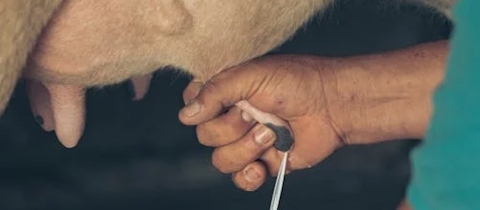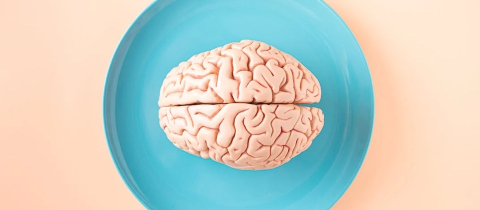In the first 20 minutes of the movie Sound of Metal, the audience watches a young musician lose his hearing. As the background buzz of car motors, conversation, and birdsong fades to silence, we see the musician become confused, frustrated, and isolated. Hearing is integral to many of our lives, and the idea of losing hearing is overwhelming and frightening, especially for those unfamiliar with sign language and the Deaf community. Sonofit capitalizes on many people’s fears of hearing loss to convince us to buy their product.
Sonofit is an “all-natural” ear bandage made of a combination of essential oils of tea tree, echinacea, and olives. In advertisements, the company claims to miraculously reverse the effects of “ototoxins” present in common medications to restore 20/20 hearing. Sonofit’s advertisement gives an inaccurate explanation of hearing loss, one that is specially tailored to support the argument to ditch common medications in favour of their ear oil.
Why do we lose hearing?
We hear because of a special process that converts vibrations of air molecules, which is what sound waves are, into electrical impulses that our brain can understand. This process starts with sound waves entering our ear canal and hitting the tympanic membrane, commonly called the eardrum. “Tympanic membrane” is a fitting name for the eardrum, because it is a thin piece of tissue stretched across the ear canal – similar to a canvas stretched across a drum. The eardrum is connected to a trio of small bones called ossicles. These are connected to the cochlea, a snail shell-shaped bone filled with fluid. Inside the cochlea are many sensitive hair cells that convert the physical vibrations caused by soundwaves into electrical impulses that our neurons can interpret.
Sensorineural hearing loss occurs when there is damage to the cochlea or auditory nerves, while conductive hearing loss is the result of damage to the ear canal, ear drum or ossicles. These two types of hearing loss can result from exposure to loud noise, aging, build-up of wax or fluid, infections, or taking certain medications. Sonofit claims to cure a specific type of hearing loss caused by “ototoxins’”.
What are “ototoxins” and are they as noxious as Sonofit claims? Actually, “ototoxin” is a made-up word, “ototoxic medications” are real and refer to medications that can cause hearing loss as a side effect. Such medications are very common, and some can be bought over the counter. Chemotherapy drugs, certain antibiotics, loop diuretics, and aspirin fall into this category. Sonofit is correct in stating that certain medications lead to hearing loss, but wrong by blaming it on a single, mythical “ototoxin”’ that can be purged from our bodies. Rather, different ototoxic medications likely cause hearing loss in different ways. One way this can happen is through destruction of the hair cells inside the cochlea, preventing them from translating the mechanical sound waves into electrical neural signals.
If you are experiencing hearing loss, do not give up whatever medication you suspect may be causing the problem and reach for Sonofit ear drops. Instead, talk to your physician. A change of medication or dosage may be indicated. In some cases, such as chemotherapy or infections, the ototoxic medication may be life-saving and hearing loss is an unfortunate outcome. Abruptly stopping treatment could cause serious harm.
Does science support Sonofit?
To put it succinctly, no. Sonofit’s main website features a video advertisement and a long list of scientific citations. When I first skimmed through the list of references, I was surprised to see reputable journals and recent publications. Unfortunately for consumers, not a single article in the long list of references tests the clinical efficacy of Sonofit. Indeed, the video advertisement proudly states that Sonofit was able to bypass FDA approval because all the ingredients in the ear oil are natural. FDA said nothing about treating hearing loss. Adding scientific citations is an easy way to confuse consumers about the legitimacy of a product as many people don’t take the time to read each article closely. If none of the articles provide direct clinical evidence for Sonofit’s efficacy, what are these articles about?
Many of the ‘supporting’ scientific articles are small experimental studies, sometimes in cells or animals, investigating one of the ingredients in the oil. Some of the citations in the reference list are review articles documenting ototoxic medications and their impacts, without mention of any of Sonofit’s ingredients. Of the small experimental studies, many don’t even look at hearing loss, instead they document the antioxidant or immune boosting effects of tea tree oil, echinacea or one of the other ingredients in Sonofit. To argue that these studies are evidence for Sonofit’s efficacy is like saying that because I like waffles, sushi, and matcha lattes, putting them all together will make another food I like. The fact is that we don’t know how effective a combination of compounds will be until we test the combination in unbiased clinical trials – and Sonofit has not done that.
The prospect of hearing loss is terrifying since we depend on hearing for communication and social connection. A miracle quick fix is attractive, but there is no evidence to support Sonofit’s all-natural concoction. Perhaps even worse than the unfounded claims are Sonofit’s advertisement methods. Sonofit uses ageist and ableist rhetoric to convince consumers that they are less worthy if they lose hearing or other bodily functions, a message especially harmful to the Deaf community and older adults. Additionally, Sonofit advertises its ear oil as a variation of indigenous medicine, participating in the age-old practise of profiting from indigenous knowledge without giving credit or compensation. Worse, there are no accounts of indigenous use of oils for hearing loss.
Maya McKeown recently graduated from McGill University with a Bachelors of Science (BSc) in Neuroscience and a minor in Mathematics.







